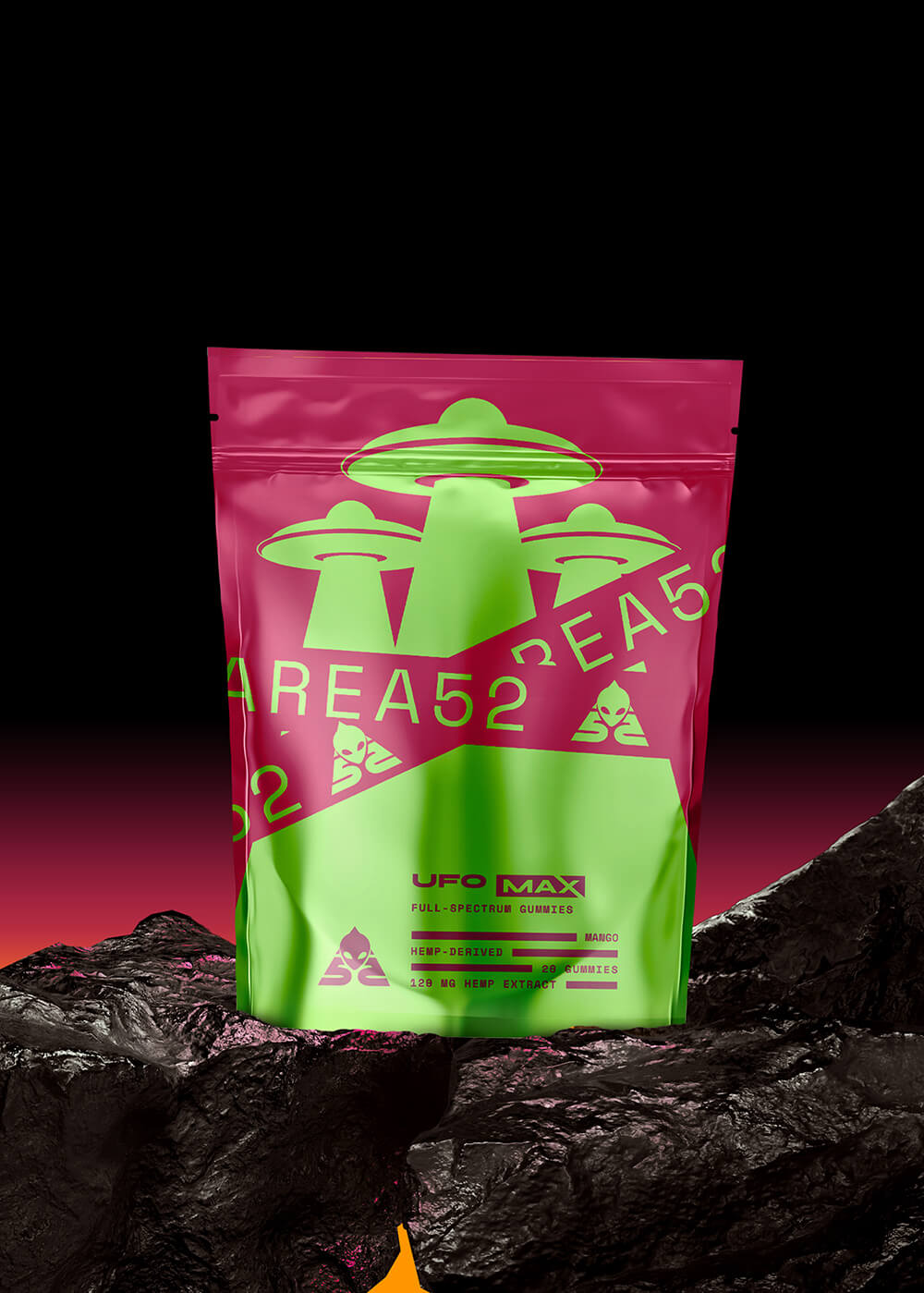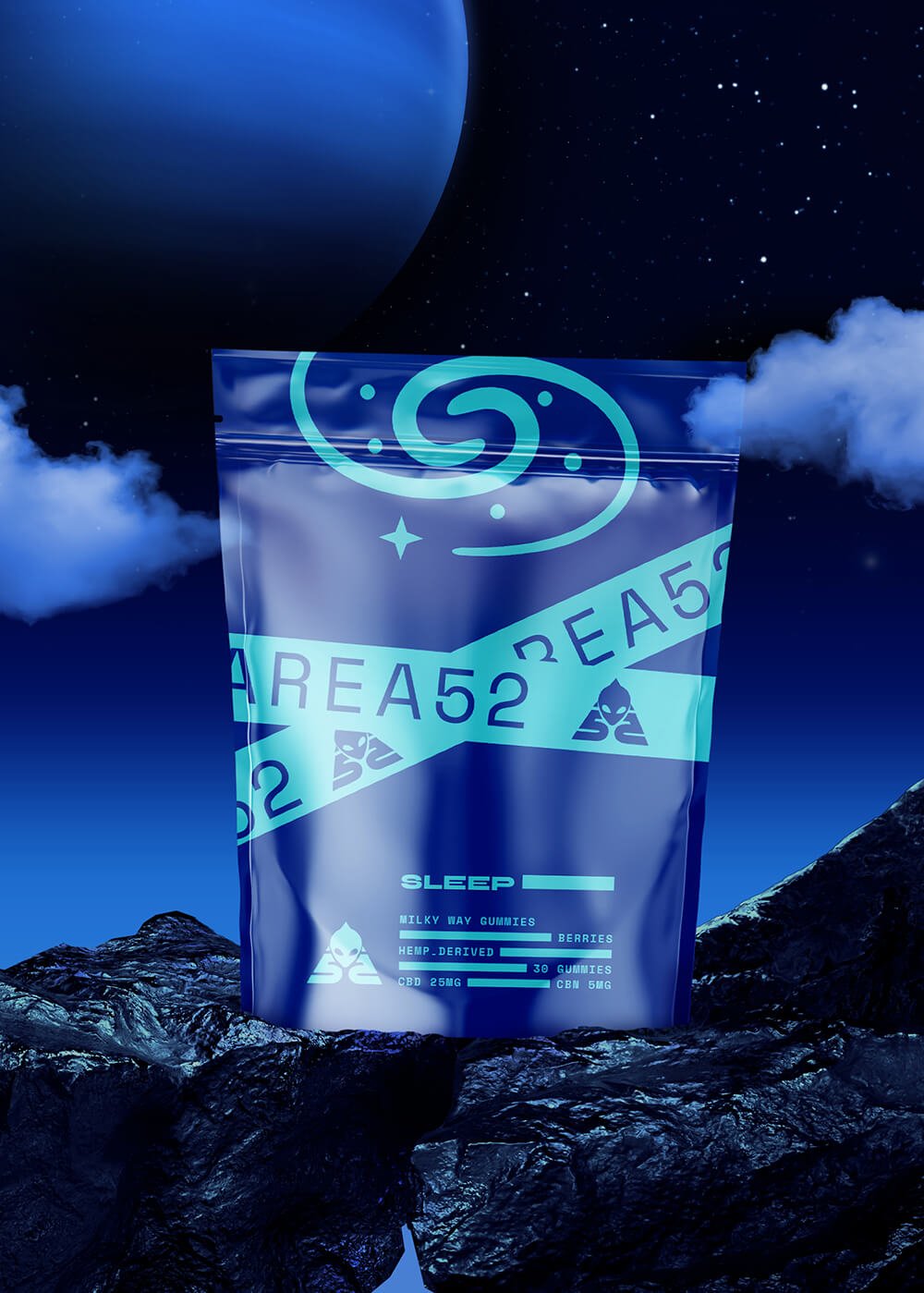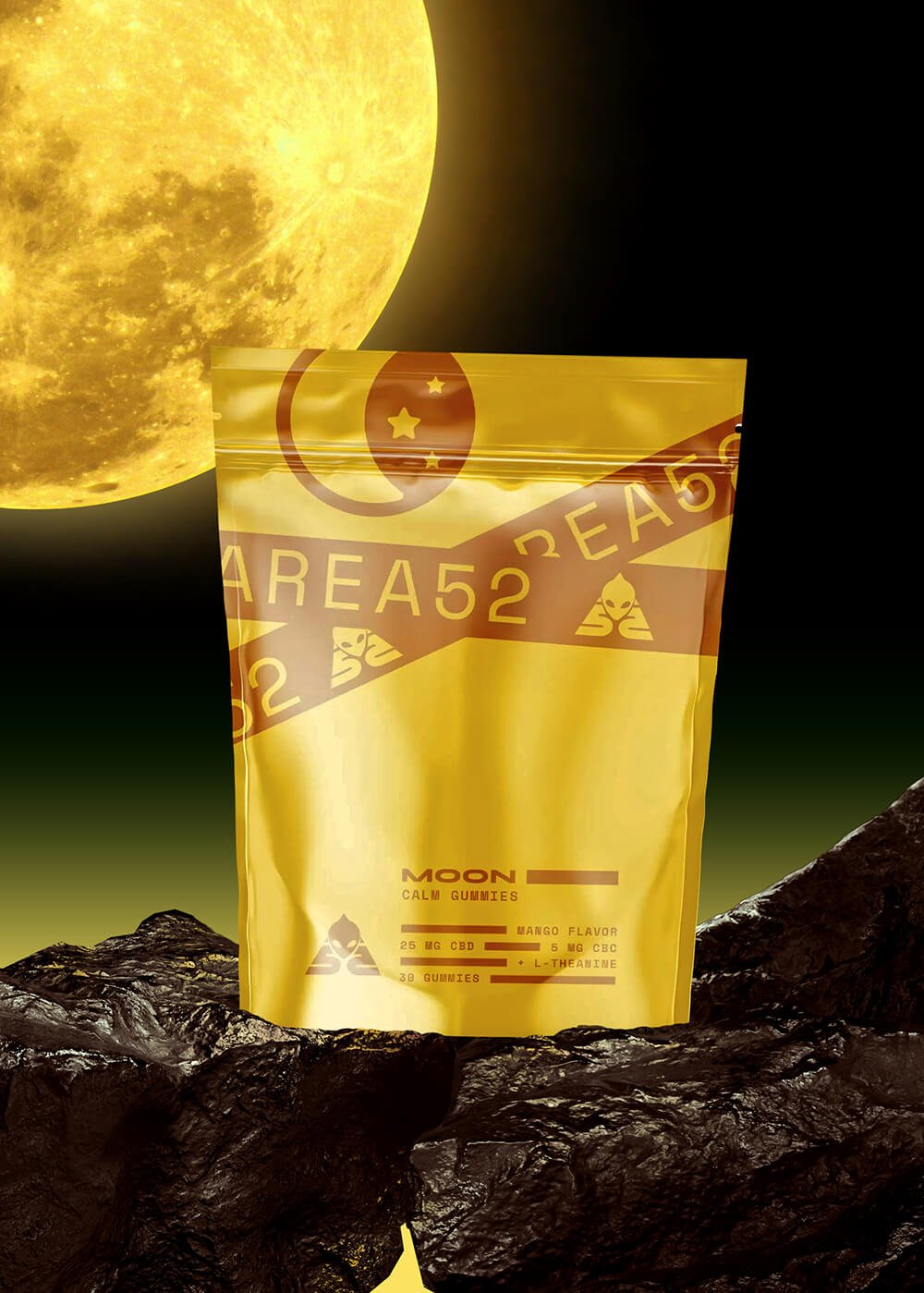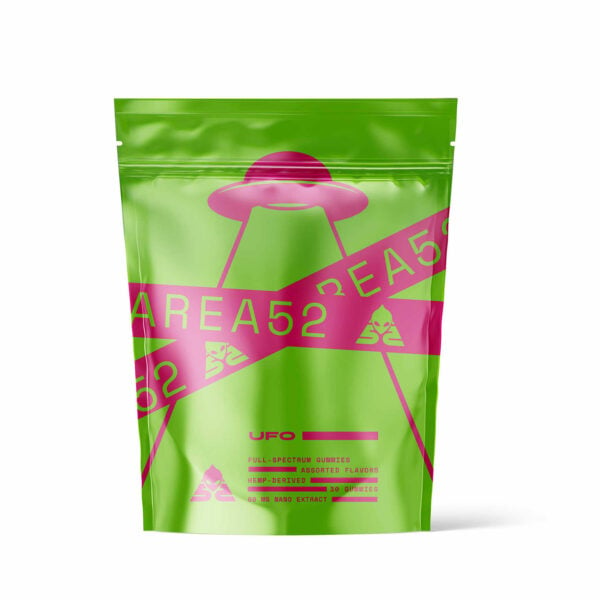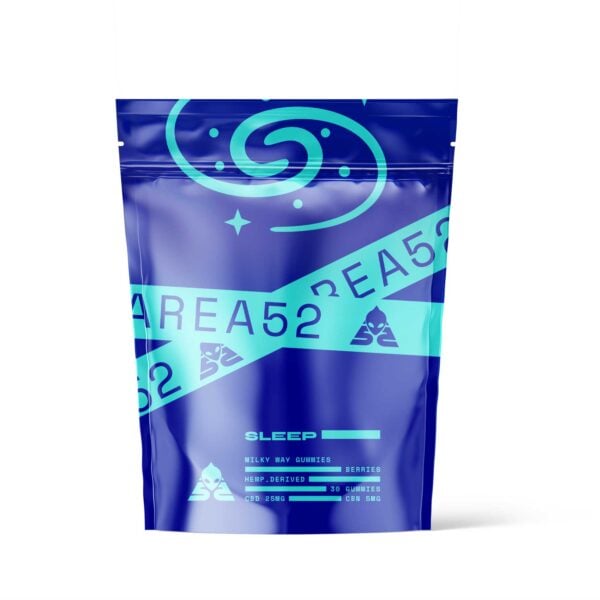Why Does Weed Make You Tired?

THC has found a number of medical uses in recent years, from treating nausea and insomnia to relieving chronic pain and easing symptoms of posttraumatic stress disorder.
For some people, THC’s propensity for making them feel tired is a desirable feature, but for others, it’s a nuisance that prevents them from fully enjoying the experience. But why does weed make you tired?
This article explores THC’s nuanced relationship with sleep. We’ll discuss the underlying mechanisms that create the tired feeling many THC users experience, as well as some helpful tips that can help you avoid it.
How Does THC Interact With the Body?
Cannabinoids interact with the body’s endocannabinoid system through two receptors: cannabinoid receptor type 1 (CB1) and cannabinoid receptor type 2 (CB2).
CB1 receptors are located primarily in the central nervous system and are responsible for producing the psychoactive effects of cannabinoids like delta 9 THC.
CB2 receptors are found mostly outside the central nervous system in the immune system, although recent cannabinoid research has found some CB2 receptors in brain tissue as well. CB2 mostly affects the body’s immune response, but some studies suggest it may play an important role in treating neurodegenerative disorders too.
Activity at both CB1 and CB2 receptors can cause people to feel tired, although the consensus is that CB1 activity mainly drives the sleepiness many people feel when using THC.
Cannabis & Drowsiness: What Factors Make Certain Strains More “Sleepy” Than Others
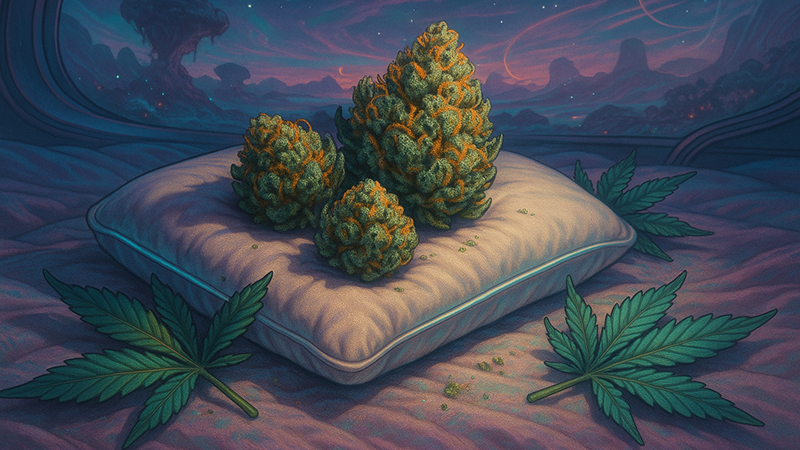
Not all cannabis strains make people feel sleepy. On the contrary, many people feel the exact opposite after using THC.
So what gives? Why do some products make us tired, while others make us feel more stimulated?
Here is a quick overview of the three main factors that create a strain’s potential for causing sleepiness.
1. Indica vs. Sativa
There are many differences between the two strains, cannabis indica and cannabis sativa strains. Indica strains are reportedly more sedating than sativa strains, so much so that people jokingly call indica “in-da-couch.”
By contrast, sativa strains reportedly provide a much more energizing experience, making them the better choice for use during the day or when you need to stay alert and productive.
While this simplification isn’t always accurate, it’s a good rule of thumb. Each species produces a different ratio of cannabinoids and terpenes, which can affect how each strain feels when you use it.
Sativa strains tend to contain extra stimulating terpenes, such as limonene, citral, and pinene.
Likewise, indica strains tend to have more of the heavier, sedating terpenes such as linalool, myrcene, and bisabolol.
There are plenty of exceptions to this rule, but in general, if you don’t want to feel sleepy while using cannabis, opt for a sativa or sativa-dominant hybrid strain and avoid the indicas.
2. Cannabinoid Profiles
Among the most common cannabinoids, CBD and CBN are some of the most sedating. Both are well-known for their potent calming and relaxing qualities that can combine with THC to produce a strong sedative action.
Choosing strains with less CBD and CBN is a good idea for people who find cannabis makes them feel more tired than they’d like.
3. Terpene Content
Terpenes are often overlooked when discussing weed’s potential as a sleep aid , espeically its effects on REM sleep, but they play a major role and can even amplify the effects of cannabis.
Terpenes are found in nearly all plants. They’re responsible for the plant’s smell and taste, but they also play a role in how they make us feel when inhaled or consumed. Terpenes are what give lavender its relaxing and sedative effects, and citrusy smells from an orange their energizing effects.
The terpenes in a cannabis strain may contribute to the overall effects profile in nontrivial ways. This is often called the “entourage effect,” which is a term for how non-psychoactive components of cannabis can contribute to the psychoactive experience.
Cannabis terpenes with sedative effects include:
- Bisabolol
- Linalool
- Myrcene
- Borneol
Does THC Make Everyone Tired?
Everyone’s experience with THC is different. A person’s metabolism, THC tolerance, and overall biochemistry affect how THC and other cannabinoids make them feel.
Products that make one person fall asleep on the couch may not have the same effect on someone else, making it difficult to draw accurate conclusions.
However, some strains are more likely to cause fatigue and lethargy than others. In a relative sense, an indica strain with a high CBD concentration and relaxing terpenes will almost always make a person more tired than a sativa strain with a lower concentration of CBD.
How to Consume THC Without Getting Tired

If you feel tired whenever you take THC, don’t worry, there are several things you can do to make your experience more enjoyable. Medical marijuana is often administered to reap specific health benefits without inducing tiredness, so there is solid clinical ground that it’s possible to consume THC without getting sleepy.
Additionally, there’s ample anecdotal evidence that many recreational cannabis users consume THC without succumbing to sleep. Finding the right combination of environment, strain, and mindset go a long way to creating a pleasurable, wakeful experience.
Here are five of the best tips for how you can set yourself up to feel less tired and enjoy taking THC to the fullest.
1. Use the Right Dose
The effects of THC on sleep and energy are highly dependent on the dose.
In smaller doses, THC has a much stronger sedative effect. This could be why indica strains and hemp flower tend to be the most sedating (both contain a lower concentration of THC than sativa, on average).
Higher doses tend to have the opposite effects — making users feel more alert and energized.
2. Choose the Right Strain
Every strain has a unique blend of terpenes, THC potency, and concentration of other cannabinoids, so it can be difficult to predict how you might react to a particular strain.
When it comes to the age-old cannabis sativa vs cannabis indica debate, trying a new strain is the only way to know for sure how it makes you feel.
Choosing a sativa strain over indica is a good place to start, but this isn’t always the case. Some indica strains are stimulating, and some sativas are strong sedatives.
When choosing a new strain, pay attention to the CBD and THC ratios. Strains with high CBD concentrations and low THC are more likely to cause sleepiness.
3. Be Aware of Your Mindset
The human brain is more powerful than many people realize, and your intentions can have tangible effects on your physiological responses. If you expect to fall asleep after taking THC, you might be more likely to feel tired than if you expect to feel energized.
Focusing on feeling tired and fixating on the possibility can create a self-fulfilling prophecy.
Try your best to clear your mind before taking THC. It can help if you have something planned or something to occupy your attention. Sitting around waiting to feel sleepy with nothing to do isn’t a great idea.
4. Combine THC With Coffee
A simple solution to eliminating the sleepy side effects of THC is to drink some coffee or use another energizing tea or supplement alongside your cannabis consumption. Oftentimes, this is enough to negate the sedative effects of cannabis entirely.
The tradeoff here is that mixing caffeine with cannabis may increase your chances of experiencing side effects like anxiety or insomnia.
5. Try Using THCV Instead
THCV or tetrahydrocannabivarin is another form of THC found in some rare cannabis strains. It’s similar to THC and has the same psychoactive effects (albeit a bit weaker). The difference is that THCV is much more energizing. This cannabinoid is popular among students for its ability to boost mental and physical energy while studying.
This cannabinoid isn’t new, but it’s only become popular within the past year or so. You can find it in all the same formats as conventional THC — vape pens, vape carts, gummies, and tinctures. You can also find THCV in dried marijuana flower (such as Doug’s Varin).
Of note, THC may be used for medical reasons, but it’s not recommended for pregnant and lactating women to consume medical cannabis. It can cross the placental barrier, and it can be transferred to the mother’s milk. Early exposure to cannabinoids increases the risk of abnormal brain development in fetuses and babies.
Final Thoughts: Why Does THC Make You Sleepy?
Even though THC is often used to combat insomnia, many people take THC for medicinal or recreational purposes and want to avoid feeling tired when taking it. Thankfully, there are many things you can do to limit how tired you feel when taking THC and have a more enjoyable and effective experience.
Choosing sativa strains over indica is enough for many people, but you can also try looking for strains with low CBD content or switch to cannabis strains or distillates that contain higher levels of THCV instead.
In general, reaping the benefits of THC takes time, so don’t be discouraged if your first experience doesn’t meet your expectations. With continued use and some experimentation, you’ll likely find a combination that works for you.
FAQs on Weed Consumption and Its Pros and Cons
How does cannabis affect you? Check out some of the commonly asked questions about weed consumption below.
1. What is Considered Heavy Weed Use?
Many people use weed for a variety of reasons, including recreational as well as physical and mental health wellness. But if you’re using weed on a daily basis several times a day, then you’re considered a heavy cannabis user.
2. Does Weed Cause Mental Fatigue?
Yes, heavy cannabis use can negatively affect the brain’s dopamine system as well as cognitive functions, resulting in mental fatigue. This can lead to brain fog, memory problems, poor concentration and attention span, reduced motivation, lethargy, and fatigue.
3. Does Weed Make You Sleep Fast?
THC can make you feel sleepy. It can also make you fall asleep faster and longer. However, do know that regularly smoking weed can also negatively impact your sleep cycle in the long run, resulting in sleep loss, impaired REM sleep, and mental fatigue.
Of note, not all weed strains offer similar effects. They may all have the same cannabinoid contents, especially THC, the primary psychoactive component. But the THC level and the terpene profile contribute to the overall effect.
4. What is a Weed Hangover?
Weed hangover refers to the unpleasant side effects one often experiences the day after consuming cannabis. The reason is unknown, but dehydration, sleep loss, and high THC content seem to play a role.
5. How Long Does It Take for Your Brain to Recover from Weed?
Heavy marijuana use can increase tolerance risk, and you’d need higher concentrations to feel the same effects. For your brain to recover, or at least your cannabinoid receptors, you’d need to take a tolerance break. This can take anywhere from 21 days to at least four weeks after cannabis cessation.
